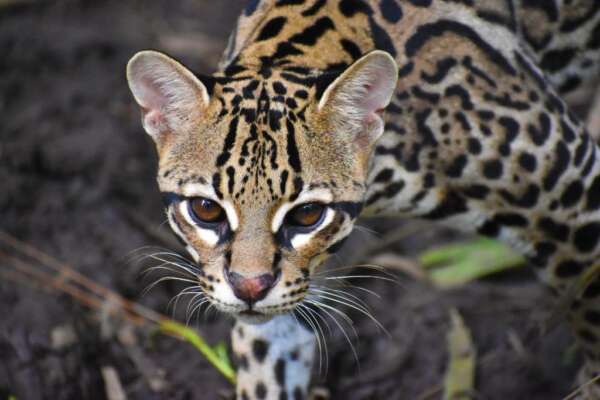
Biology
Length: 3 feet
Height: 1-1.5 ft
Weight: 15 - 35 lbs
Lifespan: 10 - 15 years
# of offspring: 1-3
Gestation period: 2-3 months
Height: 1-1.5 ft
Weight: 15 - 35 lbs
Lifespan: 10 - 15 years
# of offspring: 1-3
Gestation period: 2-3 months
Range & Habitat
Geographic Range: Southwestern US, Mexico, Central America, South America
Habitats: Humid tropical forests; riparian forests; mangrove and coastal scrub forests
Habitats: Humid tropical forests; riparian forests; mangrove and coastal scrub forests
Food & Function
Diet: Small mammals, reptiles, birds, fish, amphibians
Lifestyle: Crepuscular; Terrestrial; Partially Arboreal
Ecological roles: Population control.
Lifestyle: Crepuscular; Terrestrial; Partially Arboreal
Ecological roles: Population control.
Ocelot
(Leopardus pardalis)
Spanish: Tigrillo. Belizean Creole: Tiger Cat
Ocelots are the third largest wildcat in Belize, after the jaguar and puma. Though they are small, ocelots can be aggressive and territorial. They mark their area using urine, feces and scratch marks on trees, and have been known to occupy territories ranging from 0.5 to 17 square miles (males have larger territories than females).
Their coat patterns are unique to every individual cat, and they were once hunted for their fur; it took over 30 ocelots to make one fur coat.
Ocelots mostly hunt on the ground, but are comfortable climbing trees and sleeping up in the canopy, as well.
Fun Facts
-
- Like other animals with night vision, ocelots have a layer at the back of eye that reflects light back through the eye to help them see in the dark
- The “eye-spots” on the back of their ears are used to confuse larger wild cats or rival ocelots
Belize Zoo Trivia
- The ocelots at the Belize Zoo are: Rhaburn, Fifi, Pomona, and Boston
- Rhaburn was found as an orphan in 2014 and brought to the Zoo. He was found very dehydrated and with an infestation of parasites, and nursed back to health
- Fifi and Pomona are also orphans, and, even though they aren’t related, they get along very well and share a habitat
- The ocelots love cardboard boxes, boomer balls, and “meat popsicles” for enrichment
